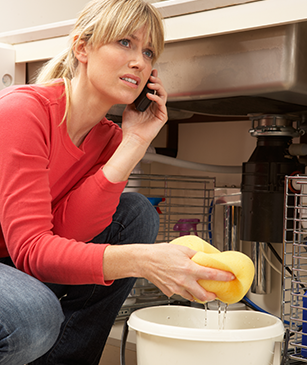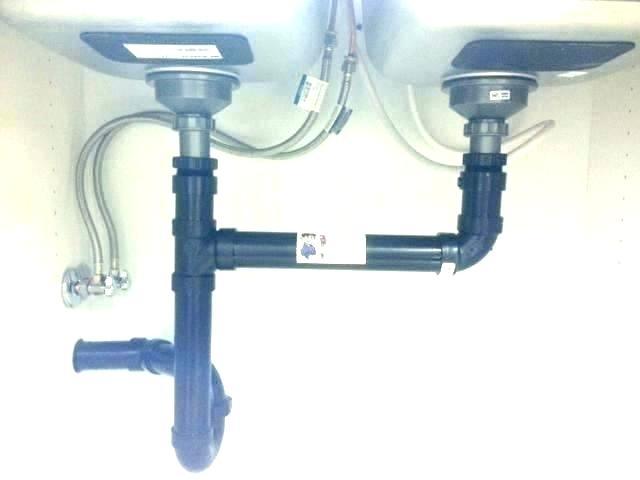Speedy Fixes for a Dripping Garbage Disposal
Speedy Fixes for a Dripping Garbage Disposal
Blog Article
Just how do you actually feel about The Handy Guide To Fixing Your Garbage Disposal Leaking?

Waste disposal unit are important kitchen home appliances that aid in dealing with food waste efficiently. However, a leaking garbage disposal can be an irritating and untidy problem to deal with. Fortunately, several leakages can be dealt with conveniently with a couple of straightforward steps. In this short article, we will discuss exactly how to deal with a leaking waste disposal unit properly.
Introduction
Waste disposal unit are mounted under kitchen sinks and are developed to shred food waste right into smaller sized pieces, permitting it to pass through the pipes system conveniently. While these devices are normally reputable, leakages can take place over time due to deterioration, loosened links, or damages to the system.
Typical Reasons For Leakages in Garbage Disposals
Worn Seals and Gaskets
Seals and gaskets play an important function in preventing water from leaking out of the garbage disposal. Gradually, these components can degrade, resulting in leakages around the disposal unit.
Loose Links
The connections in between the waste disposal unit and the plumbing system can become loosened gradually, triggering water to leak out during procedure.
Fractures or Holes in the Disposal Device
Physical damage to the waste disposal unit, such as cracks or openings in the real estate, can additionally lead to leaks.
Identifying the Resource of the Leakage
Before attempting to take care of a leaking waste disposal unit, it is essential to determine the source of the leak. This can commonly be done with aesthetic assessment or by conducting basic tests.
Visual Examination
Examine the waste disposal unit device thoroughly for any kind of indicators of water leak. Pay very close attention to locations around seals, gaskets, and link points.
Evaluating for Leaks
One method to check for leakages is by running water via the disposal unit and looking for any type of noticeable indicators of leak.
Devices and Products Needed for Dealing With a Dripping Garbage Disposal
Before starting the fixing procedure, gather the essential devices and products, including a screwdriver, adjustable wrench, plumbing's putty, substitute seals or gaskets, and epoxy or patching product for fixing splits or openings.
Step-by-Step Overview to Taking Care Of a Dripping Waste Disposal Unit
Shut off the Power
Prior to trying any type of repair work, ensure that the power to the garbage disposal unit is turned off to avoid the risk of electric shock.
Find the Leakage
Identify the specific location of the leak and establish the reason.
Tighten Connections
Utilize a wrench to tighten up any kind of loosened links in between the disposal device and the pipes system.
Replace Seals or Gaskets
If the leakage is due to used seals or gaskets, get rid of the old components and replace them with new ones.
Patching Fractures or Holes
For cracks or holes in the disposal device, usage epoxy or an ideal patching product to secure the damaged location.
Testing the Waste Disposal Unit After Repair Work
When the repair service is full, test the waste disposal unit by running water through it to make certain that the leak has actually been dealt with.
Preventive Maintenance Tips to Stay Clear Of Future Leaks
To avoid future leakages, it is necessary to carry out regular maintenance on your waste disposal unit. This consists of keeping it clean, preventing putting non-food items or hard objects down the disposal, and periodically looking for leaks or various other concerns.
Conclusion
In conclusion, taking care of a dripping waste disposal unit is a reasonably uncomplicated procedure that can be completed with basic devices and materials. By complying with the actions detailed in this article and exercising preventative upkeep, you can maintain your waste disposal unit in good working problem and prevent expensive fixings in the future.
What to Do About a Leaking Garbage Disposal
A leaking garbage disposal often goes unnoticed until you confront a sopping cabinet, a foul-smelling puddle, or an audible drip-drip-drip from the unit. The fix can be frustrating, too, because the leak can stem from a number of components in the system. Fortunately, with a little sleuthing, you can zero in on the leak and—depending on the exact location—stop the icky oozing and repair the component that caused it. Worst case scenario, if it turns out that the garbage disposal must be replaced, installing a new one is a reasonable do-it-yourself task for those with basic plumbing skills. Read on to keep the cash you’d otherwise hand over to a pro.
Prepare to find the leak
Prior to testing the garbage disposal for leaks, unplug it at the wall outlet and turn off the power from the breaker box to prevent electrical shock. Then insert a watertight sink stopper into your sink drain and wipe the unit dry with a clean cloth. In any handy container, mix a few drops of food coloring into a few cups of water, and pour the dyed water onto the sink stopper to help you locate the leak.
Investigate the source
the top, where the disposal meets the sink drain the side, where the dishwasher hose or main drain pipe connects to the disposal or the bottom of the unit Inspect each of these locations while gliding a light-colored rag over the unit; the dyed water will readily show on the rag and reveal the location of the leak. If a leak isn’t immediately apparent, remove the sink stopper and pour a few more cups of dyed water down the sink drain, then check for leaks again. Leaks near the top of the unit are more likely to show themselves while the sink is plugged, while side and bottom leaks are more noticeable while the sink is unplugged.
The metal sink flange that sits directly inside the sink drain is typically sealed around the top with plumber’s putty (a clay-like sealant) and then secured from under the sink with bolts. If the plumber’s putty deteriorates, or the bolts loosen, the flange can no longer form a watertight seal between the sink drain and the disposal—which could cause a leak at the top of the unit.
To reseal the leaky flange, you must first detach the garbage disposal. Start by loosening the screws securing the main drain pipe to the disposal, then loosen the screws in the metal clamp securing the dishwasher hose to the disposal and detach the drain pipe and dishwasher hose from the disposal. Loosen the screws in the mounting ring that connects the disposal to the metal mounting assembly beneath the sink, then pull down the disposal and carefully set it on a clean, dry surface. Loosen the bolts in the mounting assembly with a wrench, then pull down the mounting assembly and set it near the disposal.

Do you enjoy reading about The Handy Guide To Fixing Your Garbage Disposal Leaking? Create a remark down the page. We will be pleased to see your ideas about this write up. We are looking forward that you come back again in the future. Sharing is nice. Helping people is fun. Thanks for your time invested reading it.
Call Today Report this page